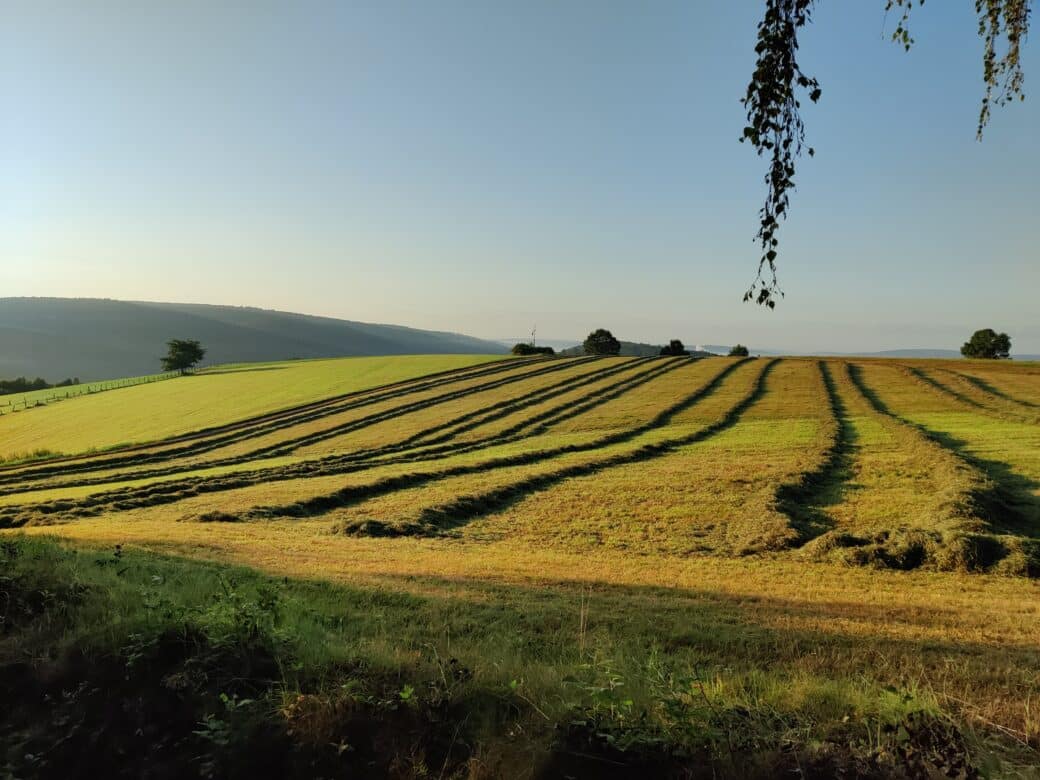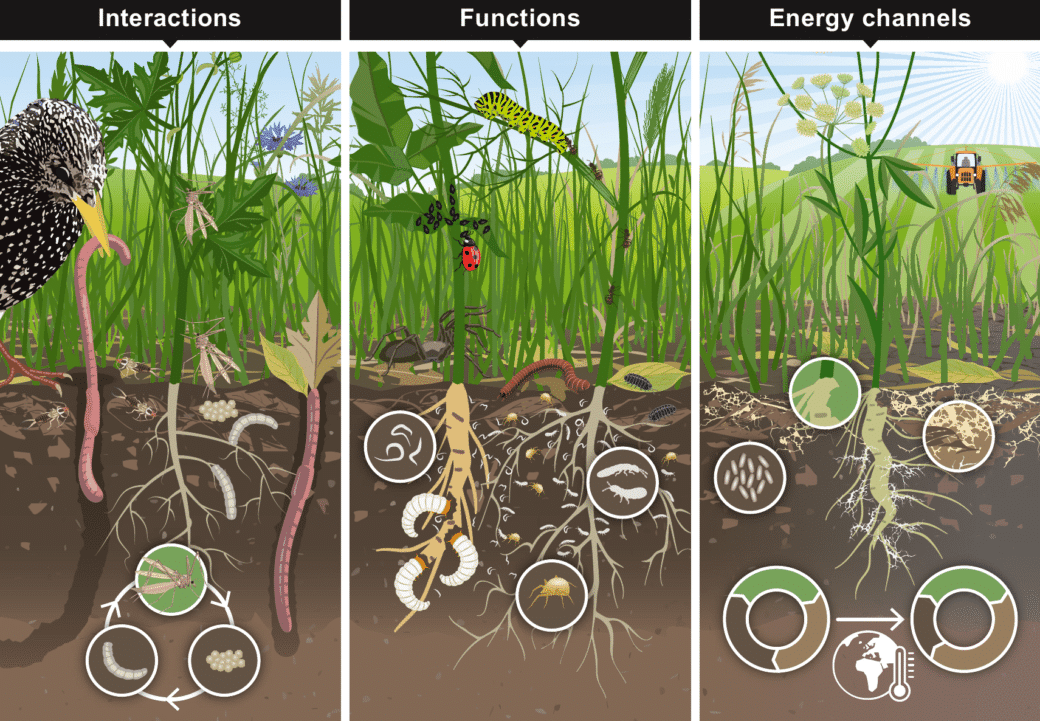Land-use impacts on above-belowground arthropod food webs, energy flux, and multitrophic ecosystem functioning

Global change is transforming Earth’s ecological communities with severe consequences for the functions and services they provide. Land use is one of the most important global-change drivers. Its effects on grassland communities have overall been well studied, but two aspects remain poorly understood: First, we know very little about land-use impacts on the interdependencies and interactions between above- and belowground compartments which is problematic because we know that above- and belowground compartments make different contributions to overall terrestrial ecosystem functioning and that the two compartments depend on and influence each other. We need to better understand if and how land-use intensity modulates the interplay of above- and belowground compartments to be able to effectively manage future grassland communities and ecosystems. Second, we know little about the impact of land-use intensity on ecological interactions and the resulting trophic networks (food webs). This lack of knowledge is problematic because it is these interactions that translate into and control the flux of matter and energy through ecosystems, which forms the basis for central ecosystem processes. The MultiCrossBEF project will use the large-scale observational land-use intensity gradient of the Biodiversity Exploratories’ temperate grasslands to close these knowledge gaps. Knowing how above-belowground interdependencies and ecological interactions change with land-use intensity and how this mechanistically alters important ecosystem processes will allow us to assess current and mitigate future land-use impacts on grassland ecosystems to strengthen them for the challenging future ahead of us.
The goal of the MultiCrossBEF project is to simultaneously study above- and belowground invertebrate communities in all grassland EP’s to comprehensively assess the impact of land use intensity on the structure and functioning of above-belowground food webs and communities. We will mechanistically study the links between land use, above-belowground biodiversity and ecosystem multifunctionality by investigating trophic interactions, energy fluxes, and energy channels across the land-use intensity gradient.
- Sampling above- and belowground invertebrate communities in all 150 grassland EP’s (suction sampling, soil cores, mustard extraction of earthworms)
- Heat-extraction and sorting of fauna samples, identification, measuring body lengths
- Stable Isotope Analysis and compound specific isotope analysis of amino acids
- potentially, additional gut-content metabarcoding analyses for selected consumer species
- construction of above-belowground food webs, calculation of energy fluxes, channels, and ecosystem multicfunctionality










